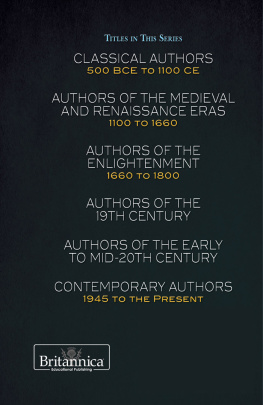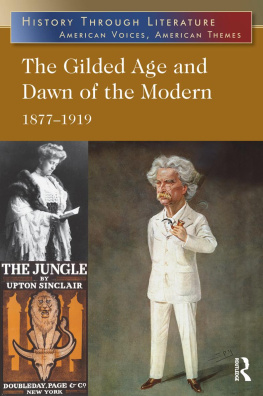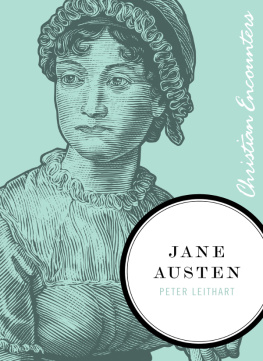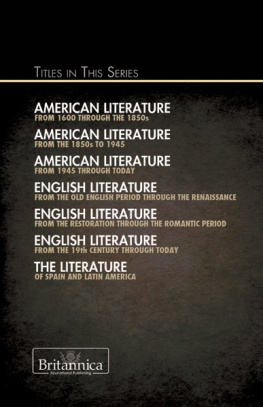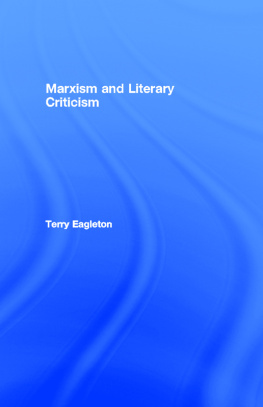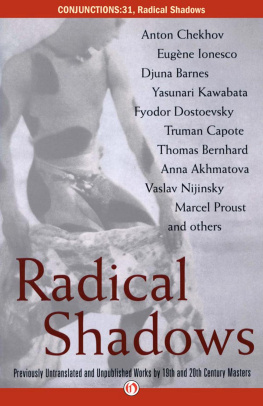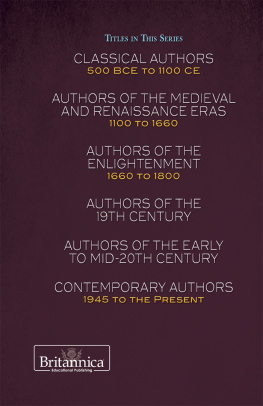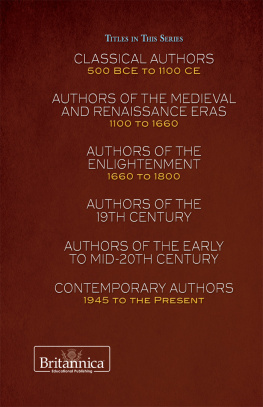

Published in 2014 by Britannica Educational Publishing (a trademark of Encyclopdia Britannica, Inc.) in association with Rosen Educational Services, LLC
29 East 21st Street, New York, NY 10010.
Copyright 2014 Encyclopdia Britannica, Inc. Britannica, Encyclopdia Britannica, and the Thistle logo are registered trademarks of Encyclopdia Britannica, Inc. All rights reserved.
Rosen Educational Services materials copyright 2014 Rosen Educational Services, LLC. All rights reserved.
Distributed exclusively by Rosen Educational Services.
For a listing of additional Britannica Educational Publishing titles, call toll free (800) 237-9932.
First Edition
Britannica Educational Publishing
J.E. Luebering: Director, Core Reference Group
Adam Augustyn: Assistant Manager, Core Reference Group
Marilyn L. Barton: Senior Coordinator, Production Control
Steven Bosco: Director, Editorial Technologies
Lisa S. Braucher: Senior Producer and Data Editor
Yvette Charboneau: Senior Copy Editor
Kathy Nakamura: Manager, Media Acquisition
Adam Augustyn, Assistant Manager and Assistant Editor, Literature
Rosen Educational Services
Hope Killcoyne: Executive Editor
Nelson S: Art Director
Cindy Reiman: Photography Manager
Karen Huang: Photo Researcher
Brian Garvey: Designer, Cover Design
Introduction by Joseph Kampff
Library of Congress Cataloging-in-Publication Data
Authors of the 19th century/edited by Adam Augustyn.First edition.
pages cm.(The Britannica Guide to Authors)
Includes bibliographical references and index.
ISBN 978-1-62275-006-1 (eBook)
1. Authors19th century--Biography. 2. Literature, Modern19th centuryHistory and criticism. 3. AuthorshipHistory19th century. I. Augustyn, Adam, 1979- editor of compilation.
PN451.A956 2014
809.034dc23
2013001501
Manufactured in the United States of America
On the cover, p.iii : Portrait of Jane Austen, whose novels detailing middle-class life in 19th-century England enjoy enormous popularity to this day. Stock Montage/Archive Photos/Getty Images
CONTENTS
O ne way to approach literature written during the 19th century is to read such works while considering their authors engagement withor reaction toRomanticism. Authors of the Romantic period tended to value nature and emotion over reason and order, often addressing themes of madness, illness, and death. In lieu of the abstract concerns about large-scale subjects such as truth and society found in the writings of the Enlightenment (the literary movement that preceded Romanticism), Romantic-era writers prioritized individual thoughts and personal feelings. Authors of the 19th Century provides a thorough, authoritative introduction to the writers of the period, individuals who addressed many important issues and themes that remain current today.
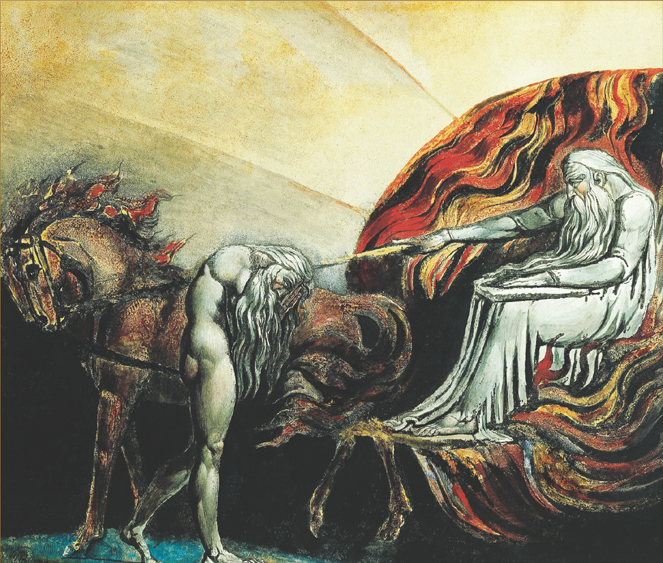
God Judging Adam , from a folio of colour etchings by William Blake. DEA/G. Nimatallah/De Agostini/Getty Images
Among these men and women is the German poet, novelist, and playwright Johann Wolfgang von Goethe, who stands as arguably the greatest early figure of European Romanticism. Goethe was educated at home before leaving, at age 16, to study law at Leipzig, where he composed some of his earliest works. Illness and emotional turmoil, brought on by unrequited love, compelled him to return to Frankfurt in 1768. After recuperating, Goethe went to Strasbourg to continue his education. There, he befriended Johann Gottfried von Herder, a prominent figure of the influential Sturm und Drang (Storm and Stress) literary movement. Goethe experienced something of a literary transformation, as he began to view language as the expression of a national culture.
Goethe published his first novel, Die Leiden des jungen Werthers (The Sorrows of Young Werther), in 1774. The novel, which follows the emotional and intellectual disintegration of its titular antihero, earned him instant international acclaim, as well as some degree of moral censure for the storys treatment of suicide and adultery. Goethes supreme literary achievementand arguably one of the greatest works of European literatureis Faust, a tragic drama in two parts that he worked on through much of his adult life.
The English poet William Wordsworth attended primary school at Hawkshead in the bucolic Lake District, an area that no doubt influenced his affinity for nature. He then attended St. Johns College, Cambridge, from 1787 to 1791, but as he put it, he was not for that hour, nor for that place. After spending some time in France, Wordsworth moved in with his sister, the poet Dorothy Wordsworth, in 1797. This move and his subsequent acquaintance with fellow poet Samuel Taylor Coleridge inaugurated the period of great artistic production for which Wordsworth is best known.
With Coleridge, Wordsworth initiated the Romantic movement in England with their 1798 collection of poems, Lyrical Ballads. Although the collection contains Coleridges most famous work, The Rime of the Ancient Mariner, Wordsworth composed the majority of the poems that make up the volume. In the preface to the second edition of the book, Wordsworth laid out a radical agenda for Romantic poetry that would break with the poetic forms of artistic predecessors, communicating human experience in language that the common man understood and used.
The seventh of eight children, Jane Austen had extensive family connections that informed and inspired many of the central themes of her novels, which focused on everyday domestic realities. Although Austen completed her earliest worksSense and Sensibility, Pride and Prejudice, and Northanger Abbeybefore 1800, they went unpublished for more than 10 years. When Austens novels began to be published anonymously after 1811, they enjoyed a wide and enthusiastic readership. Austen wrote and revised her novels vigorously until her untimely death in 1817. Both Northanger Abbey and Persuasion were published posthumously, at which time her brother revealed their authors identity to the public. In many ways, the novel as we know it todaywith its frequent focus on the realistic treatment of relatable charactersbegins with Austen.
Few authors can claim the immense popularity that Charles Dickens enjoyed during his lifetime. Dickens was born to a newly middle-class family in Portsmouth, England, in 1812. Although his father earned a respectable salary as a clerk in the Royal Navy pay office, he was irresponsible with money, and his debts landed him in prison in 1824. The family was ruined, and Dickenss education was cut short, as he left school to do manual labor to support his family. This early experience had a profound effect on Dickens, which one finds reflected in his writings.
Dickenss novels, such as David Copperfield, Bleak House, A Tale of Two Cities, and Great Expectations, provide a compelling portrait of Victorian-era England, featuring a large variety of memorable characters from all social stratafrom the privileged to the working classes. In addition to his prodigious fiction output, Dickens is notable for his journalistic work as editor of the periodicals

